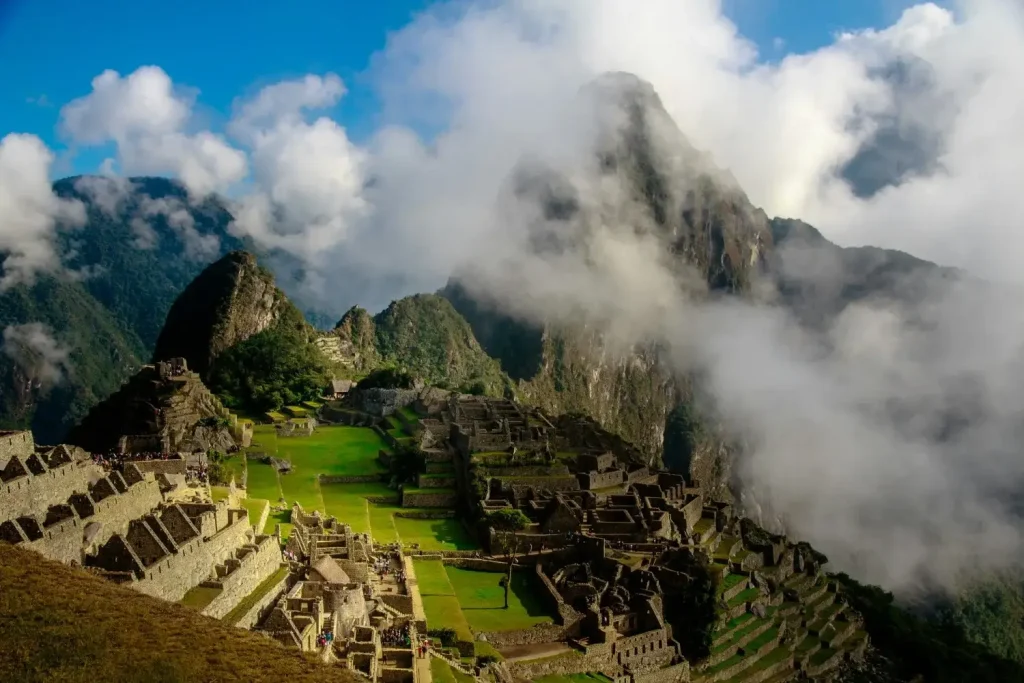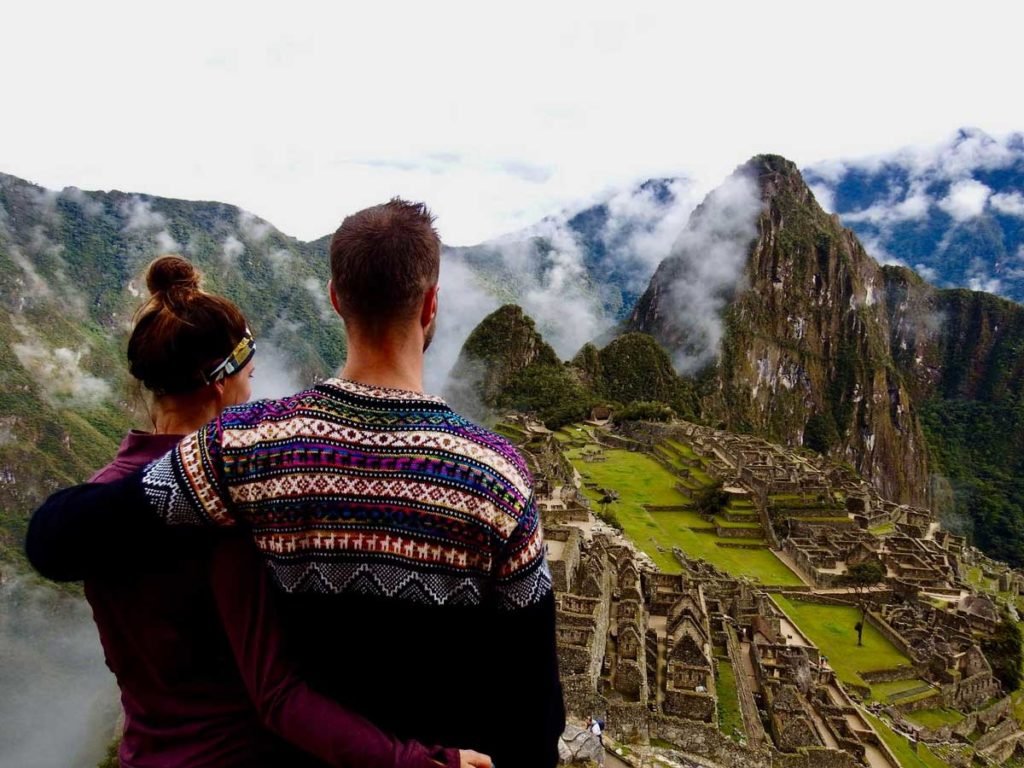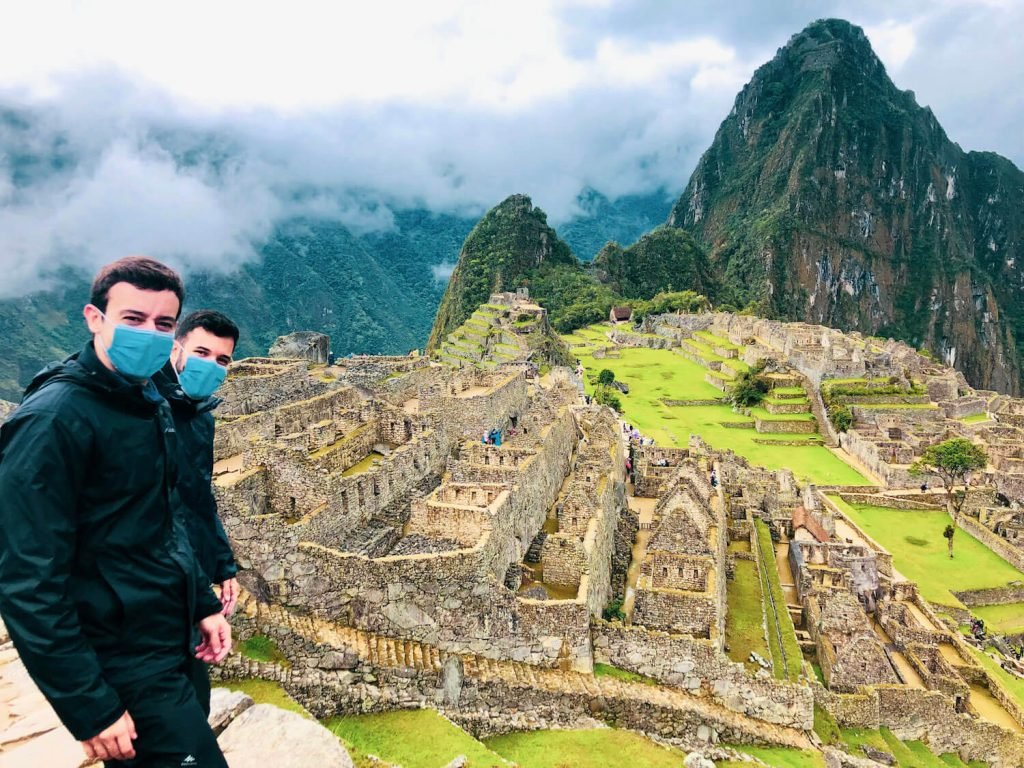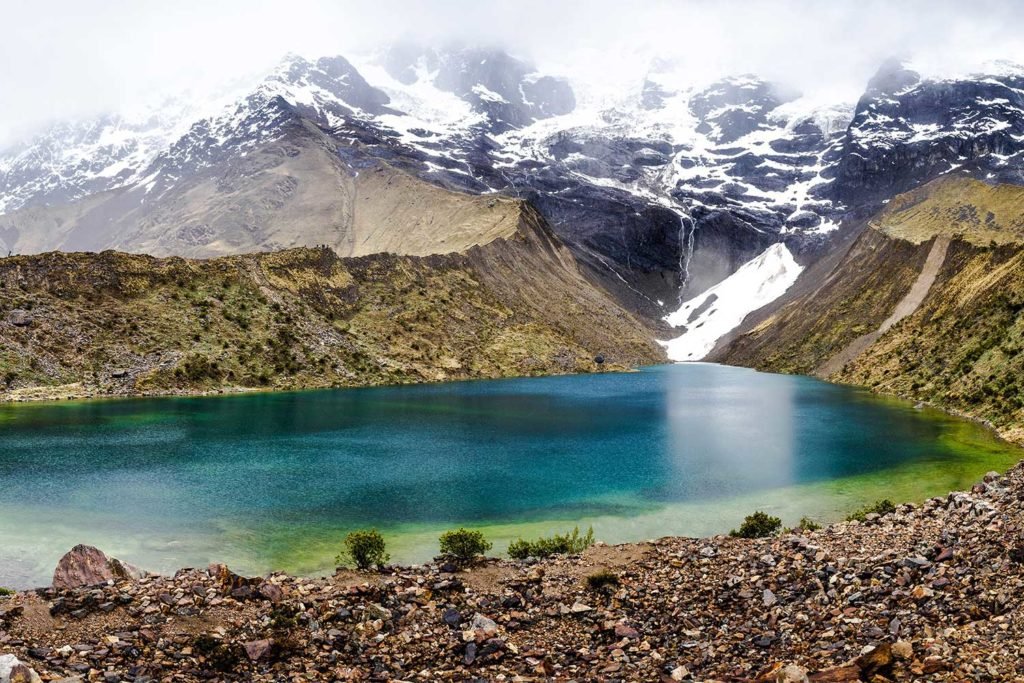Machu Picchu, an Icon of South America, rises majestically among the heights of the Peruvian Andes as one of the most fascinating wonders of the world. This archaeological gem, inherited from the Incan civilization, has captivated millions of travelers with its mystery, its impressive architecture, and its cultural significance. In this article, we’ll take you on a journey to discover what makes Machu Picchu not only a dream destination but also a true icon of South America.
The History of Machu Picchu

Since its construction, Machu Picchu has been an enigma that sparks curiosity around the world. This Icon of South America, whose exact origins remain a subject of debate, reflects the ingenuity and vision of the Incas.
- The mystery of its construction: Despite extensive research, many questions remain about why Machu Picchu was built and why it was abandoned.
- Discovery and global recognition: The story of Machu Picchu’s discovery by Hiram Bingham in 1911 and its subsequent designation as a UNESCO World Heritage Site.
- Life in Machu Picchu: A glimpse into the daily lives of the Incas who inhabited this city, their customs, and their connection with nature.
Incan Architecture and Its Marvels
Machu Picchu, an Icon of South America, is a testament to Incan architectural mastery. The flawless carving of its stones, which fit together without mortar, defies the passage of time and amazes experts from all over the world.
- Stone as the protagonist: The impressive precision and craftsmanship in the stone carving of the Incas, showcased in the structures of Machu Picchu.
- Sacred temples and plazas: A detailed description of Machu Picchu’s main buildings, such as the Temple of the Sun, the Main Plaza, and the Intihuatana.
- Hydraulic engineering: The advanced Incan technology for water management and its importance to life in the city.
Machu Picchu Today
Today, Machu Picchu remains an Icon of South America, attracting thousands of visitors every year. The importance of preserving this archaeological treasure has led to the promotion of sustainable tourism, protecting the environment and ensuring that future generations can enjoy its splendor.

- Sustainable tourism: The importance of protecting this archaeological site and the initiatives to promote responsible tourism.
- How to get there and what to do: A practical guide to planning a trip to Machu Picchu. It includes hiking routes, lodging options, and recommendations to help you make the most of your experience.
Machu Picchu: More Than Just a Ruin
Machu Picchu is much more than stacked stones. It is a sacred place that symbolizes the worldview of the Incas and reflects their deep respect for the land. As an Icon of South America, it represents Peruvian pride and identity, serving as a reminder of the splendor of a civilization that left an indelible mark on history.
Machu Picchu, an Icon of South America, is not just an archaeological site. It’s a journey to the heart of an ancient culture that continues to inspire the world. Visiting this wonder is much more than exploring its terraces and temples; it’s immersing yourself in a transformative experience that bridges the past and the present. Machu Picchu is, without a doubt, a legacy that reaffirms its place as one of South America’s and the world’s most valuable treasures.
Frequently Asked Questions

1. Where is Machu Picchu located?
Machu Picchu is located in the Cusco region of Peru, specifically in the Sacred Valley of the Incas.
2. What is the best time to visit Machu Picchu?
The dry season, from May to September, is considered the best time to visit Machu Picchu due to its sunny and clear weather.
3. How much time do I need to visit Machu Picchu?
It is recommended to dedicate at least one full day to explore Machu Picchu and its surroundings.
4. Do I need to book in advance to visit Machu Picchu?
Yes, it is highly recommended to book tickets to Machu Picchu several months in advance, especially during the high season.
5. What is the altitude of Machu Picchu?
Machu Picchu is located at an altitude of approximately 7,970 feet (2,430 meters) above sea level.
6. What clothing should I wear to visit Machu Picchu?
It is recommended to wear lightweight and warm clothing, as temperatures can vary. Don’t forget a raincoat, hat, and sunscreen.
7. Can I climb Huayna Picchu Mountain?
Yes, you can climb Huayna Picchu Mountain, but you must book this hike well in advance as spots are limited.
8. What activities can I do in Machu Picchu besides visiting the citadel?
In addition to exploring the citadel, you can hike, visit the town of Aguas Calientes, enjoy the hot springs, or take the Inca Trail.
9. What is the official currency of Peru?
The official currency of Peru is the Peruvian Sol.
10. Do I need any vaccinations to visit Peru?
It is recommended to consult a doctor about necessary vaccinations before traveling to Peru.
11. What is the official language of Peru?
The official language of Peru is Spanish.
12. What is the best way to prevent altitude sickness in Machu Picchu?
To avoid altitude sickness, it is recommended to acclimate gradually in Cusco before visiting Machu Picchu and drink plenty of water.

If you’re looking for a unique adventure in Machu Picchu, don’t wait any longer! With Lorenzo Expeditions, you can explore the jungle, cross rivers, and enjoy alternative routes like the Inca Jungle Trek. Book now and live an unforgettable experience!





